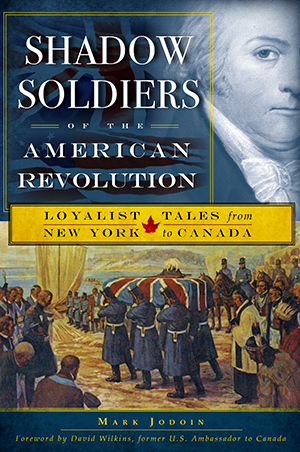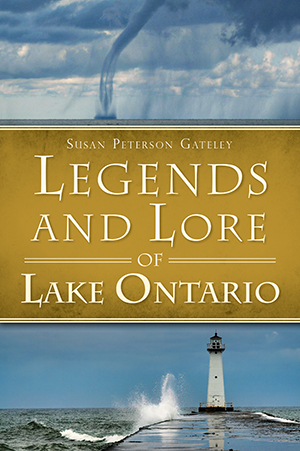Beverley House
Richmond Street, West, Toronto, Ontario
Built from circa 1812, for D'Arcy Boulton Jr. (1785-1846) and his wife Sarah Anne Robinson (1789-1863). Mrs Boulton was the sister of Sir John Beverley Robinson (1791-1863) 1st Bt., for whom the house took its name and with whom it became best associated. From 1839 to 1841, it was the residence of Charles Poulett-Thomson (1799-1841) the Governor-General who oversaw the union of Upper and Lower Canada (modern day Ontario and Quebec). In its day, Beverley House stood at the north-east corner of John and Richmond Streets and was one of Toronto's most familiar landmarks. It was here in 1842 that Sir John Robinson entertained the celebrated author, Charles Dickens. It remained in the Robinson family until 1910 and was lost to industrialisation three years later, but not before Mrs Elizabeth Robinson built a replica at 355 St. Clair Avenue....

This house is best associated with...
It was originally a small brick cottage built for D'Arcy Boulton Jr. before he moved into his mansion that still stands today, The Grange. In 1816, he sold the property to his brother-in-law, Chief Justice Sir John Beverley Robinson (1791-1863), who in his day was arguably the most influential figure in the Province of Upper Canada. Until 1820, it was the only building on the lot bounded by John, Simeon, Richmond & Queen Streets.
Sir John Beverley Robinson first extended it by adding a large wing to the west. He then built a another story over the newly extended whole ground floor transforming the cottage into a comfortable 2-story villa. He covered the house in white stucco and embellished the ground floor with a wrought-iron verandah typical of the Regency period. He built stables and a coach house to the north-west of the property and laid out formal gardens, enclosing the property as a whole with a brick wall. The property faced and was entered from Richmond Street via a wrought-iron gate, again in the style that was typical of the Regency period. The kitchen wing was added by its next occupant:
Charles Poulett Thomson, 1st Lord Sydenham
From 1838 to 1840, Sir John Robinson took a leave of absence on account of his ill health and resided in England with his wife's relations, the Merrys, at Cheltenham. In 1839, they leased their home in Toronto to Charles Poulett-Thomson (1799-1841) who became the first Governor-General of a united Canada after overseeing the union of Upper and Lower Canada (modern day Ontario and Quebec) for which he was created Lord Sydenham.
In 1840, Thomson wrote to a friend describing his routine at Beverley House: “In my room till 3 o’clock, a ride with my aide-de-camp till 5, work again until dinner, at dinner till 9, and work again until early next morning. This is my daily routine. My dinners last till 10, when I have company, which is about three times a week; except one night in the week, when I receive about 150 people.” Shortly before returning to England in 1841, the unmarried Lord Sydenham was killed when he fell from his horse at Kingston.
Charles Dickens at Beverley House
In 1840, the celebrated young English author, Charles Dickens, was invited to spend the Christmas holidays with the Duke of Wellington at his country estate, which is where he first met Sir John Beverley Robinson. During his tour of North America in 1842, Dickens only spent two days in Toronto, but during that time he was entertained at a dinner given for him at Beverley House by his old acquaintance. Dickens even broke his usual rule while on tour of "no formal dinners" for the event. The author found Toronto, "full of life and motion," but, "the wild and rabid Toryism of Toronto is, I speak seriously appalling".
Not the first Beverley House to be built by a Robinson...
Sir John and Lady Robinson had named their home "Beverley House" but it was not the first house to be built by a member of the Robinson family and so named: Beverley House in Dutchess County, New York, was built in 1758 by Lt.-Colonel Beverley Robinson (1721-1792), father of Sir Frederick Philipse Robsinson (1763-1852), Lieutenant-Governor of Upper Canada in 1815. These Robinsons were cousins of Sir John through their mutual descent from his great-great grandfather, Col. Christopher Robinson (1645-1693), of the Hewick Plantation; Secretary of State for the Colony of Virginia.
And neither the last...
Sir John died here in 1863, followed by his wife two years later. The property was left to their son, Christopher Robinson (1828-1905), who was then a 35-year old barrister and later married his considerably younger wife, Elizabeth Street Plumb (1857-1927). After he died, his widow and two of their children (Beverley and Christobel) contnued to live there. However, over the years, the area had gradually lost all semblance of its once quiet residential charm and by 1910 industry and urbanisation had taken its toll. That year, Mrs Robinson sold the property to The Hon. George Cox who immediately flipped it on to a syndicate whose intention was to raze the house and subdivide the land into factory sites.
In 1912, it changed hands again when the the Methodist Book & Publishing House purchased it from the syndicate. The following year (1913), they demolished the house except for one wall which was incorporated into the new printing house that took its place. That building existed until 1954 when it was acquired by the Ryerson Press and torn down. By 1917, the square that had once been the gardens and grounds of Beverley House was fully industrialised and now occupied by the Methodist Book & Publishing House, the Methodist Missionary Society, the Sun Printing Company, and Factor & Shulman.
Many features from the house were safely removed before its demolition and as it was being knocked down, Mrs Elizabeth Robinson was already building a replica of the old house at 355 St. Clair Avenue, on the south west corner of Walmer. She retrofitted her new home with many of the original features: the walnut panelling, bookshelves, three gilded chandeliers, and the fireplaces from the drawing room. The original front door and brass knocker were also retained and can be seen at the Royal Ontario Museum.
Sir John Beverley Robinson first extended it by adding a large wing to the west. He then built a another story over the newly extended whole ground floor transforming the cottage into a comfortable 2-story villa. He covered the house in white stucco and embellished the ground floor with a wrought-iron verandah typical of the Regency period. He built stables and a coach house to the north-west of the property and laid out formal gardens, enclosing the property as a whole with a brick wall. The property faced and was entered from Richmond Street via a wrought-iron gate, again in the style that was typical of the Regency period. The kitchen wing was added by its next occupant:
Charles Poulett Thomson, 1st Lord Sydenham
From 1838 to 1840, Sir John Robinson took a leave of absence on account of his ill health and resided in England with his wife's relations, the Merrys, at Cheltenham. In 1839, they leased their home in Toronto to Charles Poulett-Thomson (1799-1841) who became the first Governor-General of a united Canada after overseeing the union of Upper and Lower Canada (modern day Ontario and Quebec) for which he was created Lord Sydenham.
In 1840, Thomson wrote to a friend describing his routine at Beverley House: “In my room till 3 o’clock, a ride with my aide-de-camp till 5, work again until dinner, at dinner till 9, and work again until early next morning. This is my daily routine. My dinners last till 10, when I have company, which is about three times a week; except one night in the week, when I receive about 150 people.” Shortly before returning to England in 1841, the unmarried Lord Sydenham was killed when he fell from his horse at Kingston.
Charles Dickens at Beverley House
In 1840, the celebrated young English author, Charles Dickens, was invited to spend the Christmas holidays with the Duke of Wellington at his country estate, which is where he first met Sir John Beverley Robinson. During his tour of North America in 1842, Dickens only spent two days in Toronto, but during that time he was entertained at a dinner given for him at Beverley House by his old acquaintance. Dickens even broke his usual rule while on tour of "no formal dinners" for the event. The author found Toronto, "full of life and motion," but, "the wild and rabid Toryism of Toronto is, I speak seriously appalling".
Not the first Beverley House to be built by a Robinson...
Sir John and Lady Robinson had named their home "Beverley House" but it was not the first house to be built by a member of the Robinson family and so named: Beverley House in Dutchess County, New York, was built in 1758 by Lt.-Colonel Beverley Robinson (1721-1792), father of Sir Frederick Philipse Robsinson (1763-1852), Lieutenant-Governor of Upper Canada in 1815. These Robinsons were cousins of Sir John through their mutual descent from his great-great grandfather, Col. Christopher Robinson (1645-1693), of the Hewick Plantation; Secretary of State for the Colony of Virginia.
And neither the last...
Sir John died here in 1863, followed by his wife two years later. The property was left to their son, Christopher Robinson (1828-1905), who was then a 35-year old barrister and later married his considerably younger wife, Elizabeth Street Plumb (1857-1927). After he died, his widow and two of their children (Beverley and Christobel) contnued to live there. However, over the years, the area had gradually lost all semblance of its once quiet residential charm and by 1910 industry and urbanisation had taken its toll. That year, Mrs Robinson sold the property to The Hon. George Cox who immediately flipped it on to a syndicate whose intention was to raze the house and subdivide the land into factory sites.
In 1912, it changed hands again when the the Methodist Book & Publishing House purchased it from the syndicate. The following year (1913), they demolished the house except for one wall which was incorporated into the new printing house that took its place. That building existed until 1954 when it was acquired by the Ryerson Press and torn down. By 1917, the square that had once been the gardens and grounds of Beverley House was fully industrialised and now occupied by the Methodist Book & Publishing House, the Methodist Missionary Society, the Sun Printing Company, and Factor & Shulman.
Many features from the house were safely removed before its demolition and as it was being knocked down, Mrs Elizabeth Robinson was already building a replica of the old house at 355 St. Clair Avenue, on the south west corner of Walmer. She retrofitted her new home with many of the original features: the walnut panelling, bookshelves, three gilded chandeliers, and the fireplaces from the drawing room. The original front door and brass knocker were also retained and can be seen at the Royal Ontario Museum.
You May Also Like...
Categories
Styles
Share
Image Courtesy of the Toronto Public Library; Landmarks of Toronto (1894) by John Ross Robertson; Sir John Beverley Robinson: Bone and Sinew of the Compact (1984) by Patrick Brode; Toronto of Old: Collections and Recollections Illustrative of the Early Settlement and Social Life of the Capital of Ontario (1878) by Henry Scadding
Connections
Be the first to connect to this house. Connect to record your link to this house. or just to show you love it! Connect to Beverley House →













